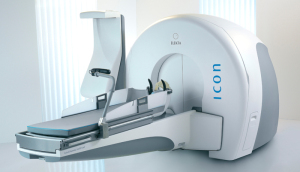by
Sridhar Nadamuni, Contributing Reporter | January 27, 2017
Selecting the right radiosurgical equipment for a facility may depend on the patient population it expects to be treating.
A study published in the December 2016 issue of the
Journal of Neurosurgery demonstrates that Gamma Knife surgery for large and complex brain tumors spares healthy brain tissue better than linear accelerator-based systems, ensuring effective dosing to target tumor tissue.
The study results support “the use of a large number of isocenters or confocal beams for the benefit of normal tissue sparing in hypofractionated brain radiosurgery,” according to researchers led by professor Lijun Ma, Ph.D., Department of Radiation Oncology at the University of California, San Francisco.



Ad Statistics
Times Displayed: 129914
Times Visited: 7389 MIT labs, experts in Multi-Vendor component level repair of: MRI Coils, RF amplifiers, Gradient Amplifiers Contrast Media Injectors. System repairs, sub-assembly repairs, component level repairs, refurbish/calibrate. info@mitlabsusa.com/+1 (305) 470-8013
The study compared the treatment efficacy of three radiosurgery delivery systems including Gamma Knife, Cyberknife, and Volumetric Modulated Arc Therapy (VMAT) linac modalities in 10 consecutive patients with single brain tumors treated between 2014 and 2015.
The researchers found that the three modalities showed similar conformity index (which correlated treated target tissue with untreated healthy tissue) of 1.18, 1.12, and 1.21 for Gamma Knife, Cyberknife, and VMAT, respectively.
However, the Paddick gradient index — defined as the ratio of the 50 percent prescription dose isodose volume to the 100 percent prescription dose isodose volume — varied more significantly. The distribution of the prescribed radiation dose and the volume of normal brain tissue receiving a radiation dose of 15 Gy, 10 Gy or 5 Gy, favored Gamma Knife. The average prescription isodose values were 52 percent, 60 percent, and 88 percent for Gamma Knife, Cyberknife, and VMAT, respectively, resulting in significant differences in dose hot spots.
Gamma Knife also showed greater central target dosing compared with Cyberknife and VMAT. Patients treated with Gamma Knife had significantly less exposure of their healthy brain tissue to a dose of 15 Gy compared with Cyberknife or VMAT. The Gamma Knife and Cyberknife were comparable at 10 Gy and 5 Gy doses, and both were significantly lower than the VMAT group.
“The normal brain–tolerable dose for hypofractionated treatments can range from single-fractional equivalent doses of 12 Gy for benign tumors such as acoustic neuroma to 24 Gy for malignant lesions, serious arteriovenous malformations (AVMs) and trigeminal neuralgia,” Dr. Michael H. Brisman, FACS, chief of the Division of Neurosurgery and co-director of the Institute of Neurosciences at Winthrop University Hospital, told HCB News. “The dose can be escalated to as high as 24 Gy when spread over five sessions.”

